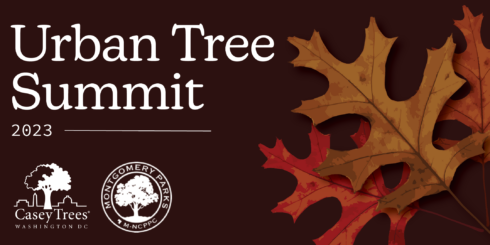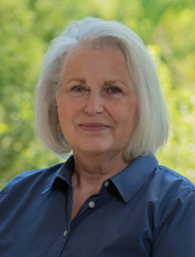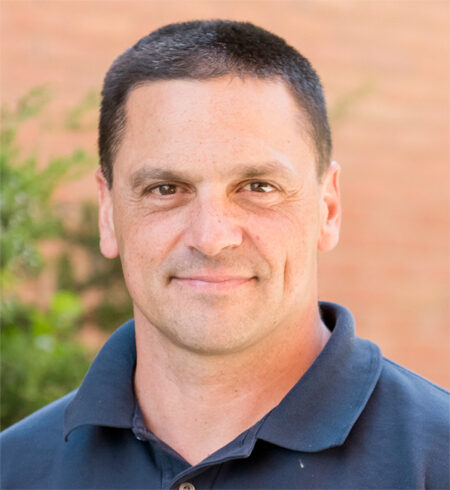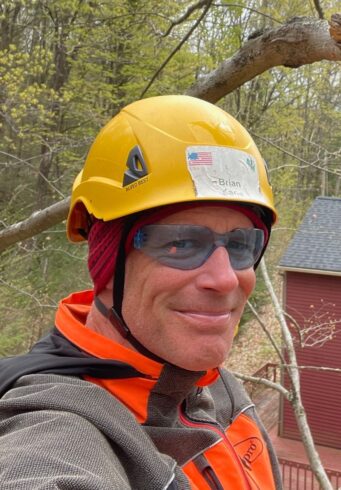12th Annual Urban Tree Summit – 2023 Program

Montgomery Parks and Casey Trees, Washington D.C., present the twelfth annual conference — Urban Tree Summit. Presentations will focus on the health and welfare of trees in our increasingly developed landscapes. Learn from some of the country’s leading experts about innovative efforts to plant, protect and preserve trees in urban and suburban settings.
We encourage all arborists, landscape industry, and environmental/green industry professionals, engineers, designers, housing developers, and interested citizens to take advantage of this opportunity to learn new techniques and concepts on what can be done to ensure the survival of trees in our built environment.
We are kicking off our event with a virtual session to allow anyone far and wide to learn from our speakers. Following the virtual session, in September we will be hosting three in-person field sessions. These smaller sessions will foster engaging conversations, networking opportunities, and a more impactful experience overall. Register early, space is limited for each field session.
Highlighting Our 2023 Urban Tree Summit
Mark Hartley, Consulting Arborist, The Arborist Network, Sydney Australia
“Tree Protection Should Push Limits”
Lydia Scott, Director of The Chicago Region Tree Initiative, The Morton Arboretum
“Public Gardens can Play a Critical Role in Improving the Urban Forest: Case Study – The Morton Arboretum”
Matthew Baker, Professor, University of Maryland-Baltimore County
“Living on the Edge: Distinguishing Forests, Their Ecosystem Services, and Their Vulnerability within the Urban Tree Canopy”
Brian Kane, Professor, University of Massachusetts
“Choosing a Safe Tie-in Point (TIP) for Climbing”
Highlighting – In the Field Sessions September 2023
September 14, 2023 – Arlington National Cemetery Field Session
Arlington National Cemetery Tree Tour
Presented by: Greg Huse, Urban Forester, Arlington National Cemetery
Location: Arlington National Cemetery
September 15, 2023 – Capitol Grounds Tour Field Session
Architect of the Capitol’s Capitol Tree Tour
Presented by :James Kaufman, Director, Architect of the Capitol, Capitol Grounds and Arboretum
Location: US Capitol Grounds, Washington, DC
September 15, 2023 – Montgomery County Champion Tree Field Session
Montgomery County Champion Tree Tour
Presented by: Joe Howard and Carole Bergman, Montgomery County Forestry Board
Location: Brookside Gardens, 1800 Glenallen Avenue, Wheaton, MD
Speaker – Mark Hartley

Mark Hartley is a second-generation Australian arborist whose career spans over four decades. Mark has received the ISA’s Award of Merit for his contribution to arboriculture and has received six awards of Excellence in Arboriculture from the TCIA for transplanting and tree pruning. His expertise in tree risk assessment, anatomy, disease, and transplanting have resulted in him providing arboricultural services in 10 countries over three continents. He has provided advice to householders, celebrities, and royalty alike.
Speaker – Lydia Scott

Lydia Scott has been the Director of the Chicago Region Trees Initiative (CRTI), led by The Morton Arboretum, since its founding in 2014. CRTI leads a coalition of 200+ organizations across the seven-county Chicago metro area that includes a wide range of communities and organizations. The CRTI’s mission is to ensure that trees are healthier, more abundant, more diverse, and more equitably distributed to provide needed benefits to all people and communities that live in the Chicago region. Lydia has a Master’s of Science degree in Environmental Science from the University of Illinois.
Speaker – Matthew Baker

Dr. Matthew Baker is a broadly trained hydro-ecologist interested in the effects of biophysical variation and human activity on ecological processes and biological communities in both urban and rural ecosystems. He has expertise in stream ecology; forest ecology; ecological restoration; wetlands; terrain analysis; watershed hydrology and water quality; GIS and remote sensing; and ecological statistics. Most of his work is currently focused on understanding the diversity and ecosystem services of urban forest patches in Baltimore and DC, long-term study of urban woodlands as part of the Smithsonian’s ForestGeo network, mapping streams and wetlands at high resolution within the Chesapeake Bay watershed and elsewhere, studying urban flooding with the City of Baltimore, assessing drivers of degradation in streams with Maryland DNR, USEPA and USGS, characterizing the effects of dam removal with NOAA and American Rivers, and studying the effects of ecosystem restoration. He occasionally provides expert testimony in federal, state circuit, and tax courts.
Speaker – Brian Kane

Brian Kane, Ph.D. is the Massachusetts Arborists Association Professor of Arboriculture at the University of Massachusetts – Amherst. He is an ISA Certified Arborist who began dragging brush in 1988. He has written many scholarly and trade articles and given presentations all over the world on the mechanical aspects of tree work. He recently completed a term as the ISA alternate rep on the ANSI Z133 committee.